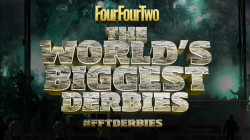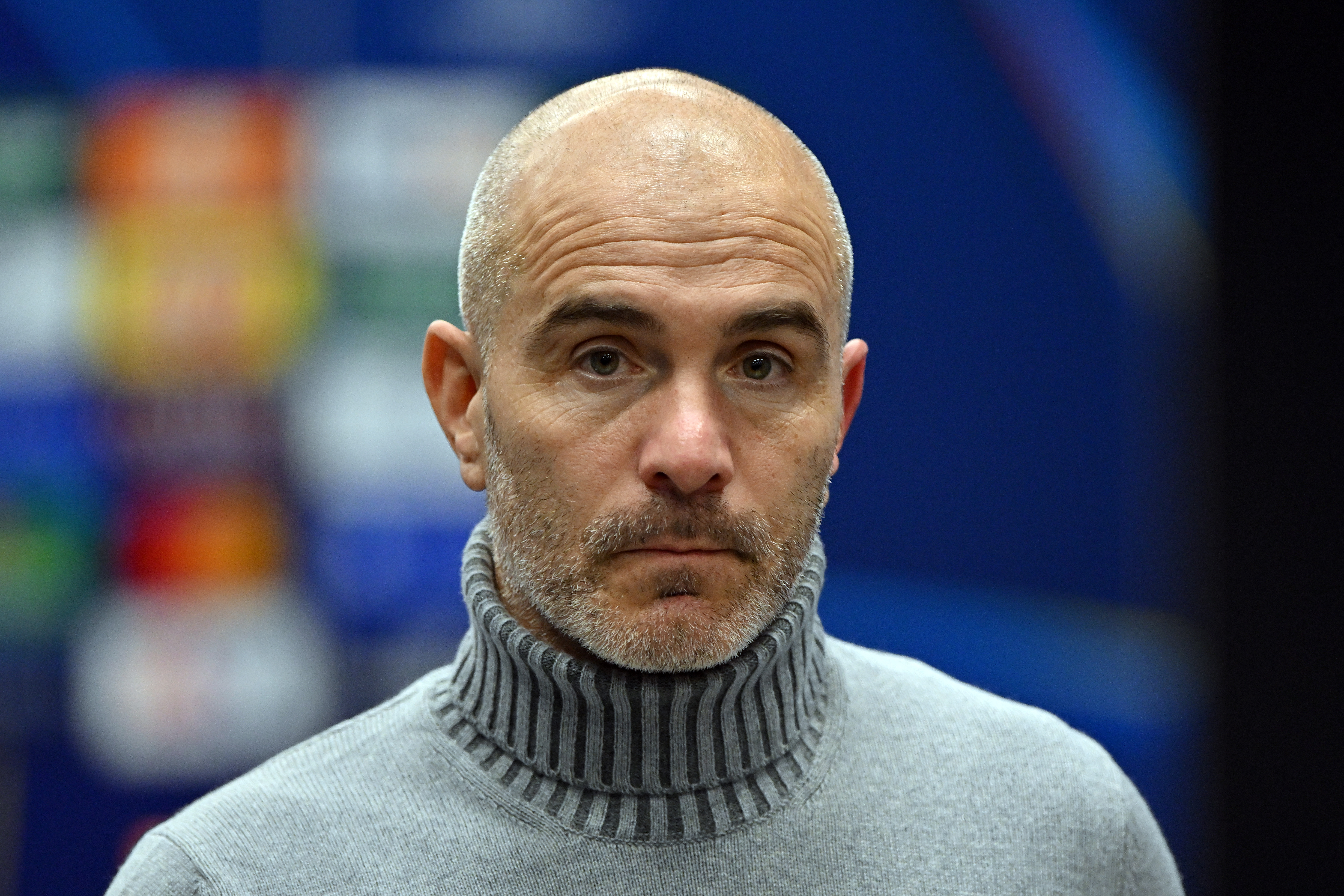Drugs, death and salsa: Why America vs Deportivo Cali is more than a game
Colombian powerhouses America and Deportivo Cali share a city but not much else in common. In 2007, FourFourTwo's Daniel Neilson dared to venture into one of the continent's hottest derbies
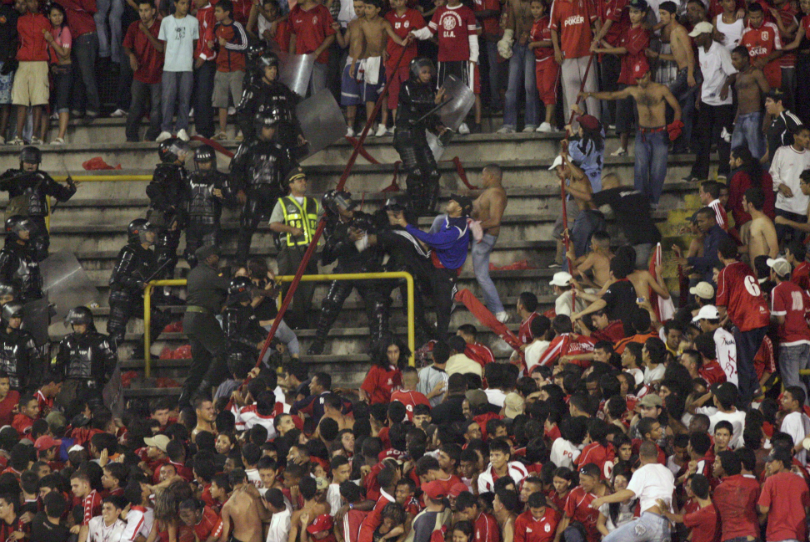
The threats began before FourFourTwo had even arrived in Colombia. It had taken four months of delicate negotiations with the Frente Radical Verdiblanco (FRV), Deportivo Cali’s barra brava – one of Colombia’s biggest and most highly organised hooligan groups – before we were permitted to accompany the leaders of this 3,000-strong group into battle against city rivals América de Cali.
You have to understand we are in a country full of conflict and we have to take precautions
“You must be trustful and reliable or YOU WILL HAVE PROBLEMS IN YOUR FUTURE,” warned one of the many e-mails from our contact ‘Johnny’. “You have to understand we are in a country full of conflict and we have to take precautions.”
Despite a vastly improved safety record and considerable rise in tourism, Colombia is still a country at war. For more than 40 years government forces, left-wing guerrilla groups and right-wing paramilitaries have been waging a bloody three-way fight for power, killing thousands of people. Mix in the fact that Colombia is the biggest producer of cocaine in the world and you have a very explosive cocktail.
There is a serious risk of kidnapping and crime throughout most parts of the country
“There is a serious risk of kidnapping and crime throughout most parts of the country,” advises the UK Foreign Office, adding dark warnings of “a high threat of terrorism” and “lives being lost on an almost daily basis”.
The Cauca Valley and its capital Cali is no exception. Set in the heart of guerrilla-controlled countryside, it is home to the Norte de Valley cartel, the biggest drug-trafficking organisation in the world, whose leader Diego Montoya is currently starring in the FBI’s 10 Most Wanted list.
It is against this violent backdrop that Deportivo Cali and América de Cali came to despise each other. Their first game, in 1931, ended with América banned from all tournaments for a year. Last year saw the murder of one of the FRV’s leaders and, in 1982, dozens died in a stampede at a meeting of the two teams. It was Colombia’s Heysel Stadium disaster.
Like almost everything in this beautiful yet blighted country, Cali’s derby is inextricably intertwined with death and drugs. But it is also famed for the fiery Latin passion that fans of both teams bring to the terraces.
The best features, fun and footballing quizzes, straight to your inbox every week.
On the terrace with the barra brava
The very centre of the north terrace in the Estadio Pascual Guerrero is strictly reserved for the upper echelons of the FRV. Anyone else who tries to enter this zone is fiercely held back. At least, that’s usually the case. Today, though, FourFourTwo stands amid the heaving throng.
In the middle is Franklin, the leader, El Don. Tattoos and cuts scar his heavy frame, long bedraggled hair hangs loose over his torn t-shirt, his eyes are bloodshot from beer and poppers. From this privileged position he conducts his rambunctious and ramshackle orchestra of drums, trumpets and 3,000 coarse voices. He constantly barks orders: “different song”, “sing louder”. The stand bounces along with the fans to the beat of five bass drums. A couple of snares tap out a pattern while the trumpets guide the melody. The noise is deafening.
And then comes a goal. Bodies and arms flail everywhere, the racket doubles, green smoke is blasted out over the pitch, streamers fall from the sky, the concrete floor sags. Suddenly the whole stand is covered by a giant flag decorated in team’s green and white colours. It’s like sharing a tent with the 3,000 nuttiest fans you’ve ever met. And then the sky appears again and the game, well under way, can be glimpsed through the flags. The exhilaration is literally breathtaking.
On the opposite terrace, thousands of América’s barra brava known as Baron Rojo Sur are briefly silenced before redoubling their efforts and spitting hatred back north. The atmosphere is as oppressive as the uncomfortable heat.
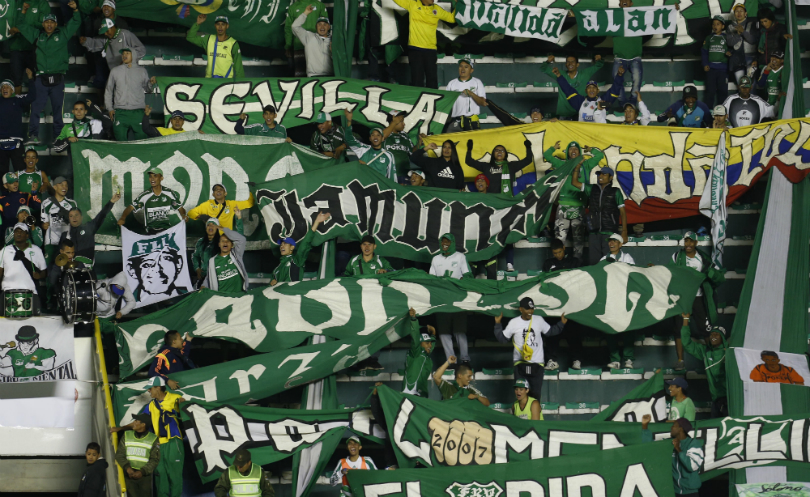
Cali, salsa and violence
Colombia’s third city sits in the southwest of the country, bathed in sweltering heat. Two great mountain ranges cut through the mist, the Cordillera Occidental and the Cordillera Central, flanking the city and its endless sugarcane plantations. It is a dramatic setting for a place in which high drama is part of daily life. Appropriately, and a touch disconcertingly, on FourFourTwo’s arrival the taxi’s radio started blaring "Highway to the danger zone" as we hurtled into the city.
Central Cali is not a pretty place. Modern monoliths have eaten up most of the colonial architecture, but that doesn’t seem to bother the caleños who are strikingly friendly and cheerful. They also pride themselves on being Colombia’s biggest party animals. Salsa is the soundtrack to Cali and from early evening the bars and clubs down the main strip fill with scantily-clad women and smartly-dressed men, ready for a night of knocking back aguadiente – a potent aniseed-flavoured drink made from sugar cane – and dancing off the effects.
By morning they return to the teeming streets, passing stalls selling a bewildering array of fruit and avoiding the manically-driven colourful chiva buses. There is always time to chat with a neighbour, or sup down a strong tinto made from Colombia’s primary export, coffee.
The centre feels safe, and it is; only heavily armed police and newspaper headlines hint at the violence and poverty that still permeate the more rural regions of the province and Cali’s poor shanties. It is one of these less than salubrious areas, in a dimly-lit park below an underpass, that FourFourTwo can be found the night before the game, supping beer with 40 or so members of the FRV who are putting the finishing touches to their derby plans.
We model ourselves on the ultras of Italy and the hooligans of England, not the barra bravas of Argentina. We are different, very organised and very disciplined
Our contact, the baby-faced Johnny, explains how the FRV is broken down into seven ‘legions’ around Cali, each with a leader who reports to Franklin. The bespectacled Calvo Andres is one young legion leader with an encyclopaedic knowledge of European hooligans.
“The Headhunters of Chelsea, Millwall Bushwackers, Inner City Firm of West Ham,” he reels off. “We are pioneers in Colombia. We model ourselves on the ultras of Italy and the hooligans of England, not the barra bravas of Argentina. We are different, very organised and very disciplined.”
Andres asks if we have seen their ‘bibles’, the hooligan films Green Street (the one with ‘Frodo’) and The Football Factory. Hector Fabio, another legion leader, joins the conversation. “We were the first ultras in Colombia, starting in 1992. We were radical then because we were more than just waving a flag or singing a song. We live the game everyday. Nothing is more important to us than winning, lifting our team as much as we can.”
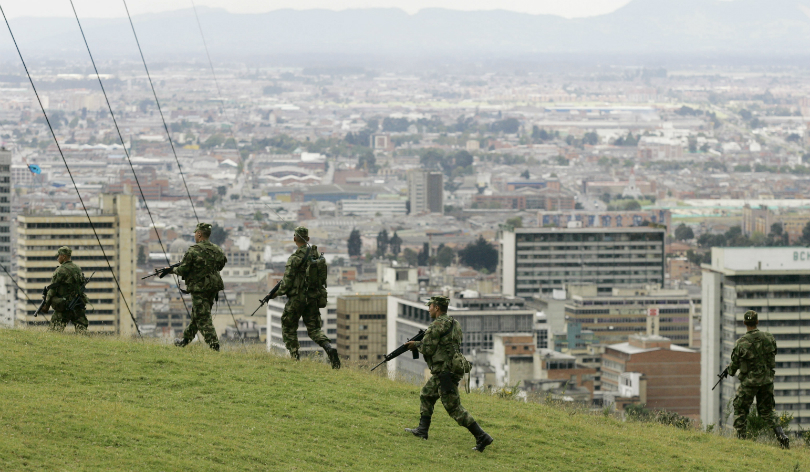
They boast about fights they have had with other fans, but also lament the loss of a fellow verdiblanco at the hands of, they claim, Baron Rojo Sur. It was almost a year ago when 22-year-old Stevenson Galeano Rivera was shot through the forehead during a clash between the two groups.
We don’t want any more violence. We still support our teams fanatically but it’s not worth the death of a young man
“We don’t want any more violence,” one legion head insists. “We had a national congress with all the other barras of Colombia so there wouldn’t be any more trouble at national games. We still support our teams fanatically but it’s not worth the death of a young man.”
Then Franklin stands up and the assembled members hush. “This is the big one. We all need to be there; no excuses, singing together, jumping together,” he shouts to cheers. “I was talking to the players today,” Franklin continues over a chorus of hoots and whistles. “They said they need you to support them. We can change the course of the game, you give them confidence. This is a clasico, and we simply can’t lose.” The throng start to chant: “Come on Deportivo/We are going to win/These fans will never leave you/We’ll never stop encouraging you”.
As we walk out into the night, Andres hands out a 14-page song booklet produced for the game and distributes the latest copy of their glossy monthly magazine Ultra Verdiblanco which features an interview with Deportivo manager Omar Labruna, a eulogy to their lost friend and an advert posted by a local politician seeking to curry favour with the FRV.
NEXT: Cali's class divide
The great divide
Like all great footballing rivalries, the two sets of fans are separated by more than just a whimsical affection towards their team. A deep cultural and economic divide separates Cali's generally middle-class los Azucareros (named after the region’s ubiquitous sugarcane) and América's working-class los Escarlatas (after their fire-engine red jerseys).
These disparities of wealth have characterised the region since the Spanish conquistadores overwhelmed and enslaved indigenous tribes of the Cauca Valley in 1536. Quickly recognising the cash bonanza in sugar cane, the Spanish imported thousands more slaves from Africa, a legacy still represented in the faces of the population today. Cali steadily grew in importance, attracting both sugar and coffee magnates and poor farm workers, but it was when the railroad rolled in at the beginning of the 20th Century that the city began to flourish.
At this time sons of the wealthy tycoons returned from studying in Europe with a new game and formed Cali Football Club in 1912. In contrast, América originated from literally the other side of the tracks. Established by Pablo Manrique, a sports teacher at a poor college in the southern shanties, on behalf of the city’s workers, it took nine years and three names changes (Júnior, Racing and Independiente) before the club was officially founded on February 13 1927.
In the first derby, América had two goals disallowed. Furious, they published flyers denouncing it and were suspended for a year
In 1931, América finished top of the second division and wanting to test themselves against a team from the top flight organised a ‘friendly’ against neighbouring side Cali. It turned out to be anything but. By now called ‘Deportivo’, Cali took an early lead, but América quickly replied with two goals, both, according to América’s official history, disallowed for offside. A furious América published flyers denouncing the ‘irregularities’ of the match and the Federation of Colombian Football reacted by suspending the team for a year.
In 1948, though, América became the first professional team in Colombia, quickly followed by Millionarios and Santa Fe in Bogotá, then Cali. And in September of that year the two Cali teams played their first professional derby. Cali won 4-3 but journalists admiringly noted América’s penchant for aggressive and passionate play, and described them as playing like devils. The tag stuck and the club adopted the devil logo as their own – apart from 12 years in the ‘80s and ‘90s, when the coach banned it for religious reasons.
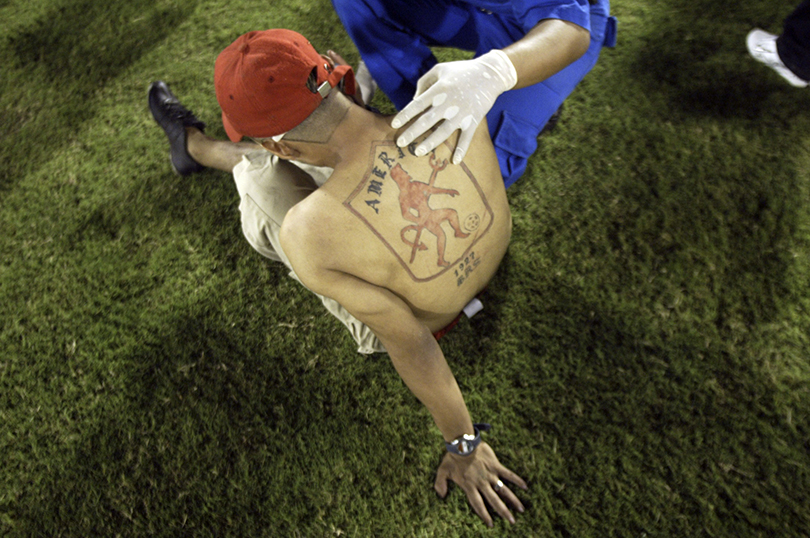
Parochial and continental
At first neither team had great success in Colombia’s premier tournament, the Copa Mustang. Cali finally broke the deadlock in 1965, but América had to wait until the appointment of Gabriel Ochoa Uribe as coach in 1979 to win their first Copa. Then the floodgates opened. During Uribe’s 12 years at the helm, América won the Copa Mustang seven times and finished second in the Copa Libertadores, the South American Champions League, three years running.
América and Cali fans wouldn’t even speak to each other. Once I hailed a taxi with a little devil hanging from the mirror. As soon as he recognised me, he swore at me and drove off
As always, however, it was the derbies that were most fiercely fought. Abel Da Graca, an Argentine who is now director of Cali’s youth teams, remembers playing in clasicos between 1971 and 1977. “The city was divided,” he says. “América and Cali fans wouldn’t even speak to each other. Once I hailed a taxi with a little devil hanging from the mirror. As soon as he recognised me, he swore at me and drove off.
“It was the most important game of the calendar. You remembered who hit you, who knocked you over, so you had to get your own back. This is lost now because players move around so much.”
On November 17, 1982 the rivalry came to a horrific conclusion after América and Cali drew 3-3 at the Pascual Guerrero Stadium. Reports tell of drunken thugs urinating on enemy fans below causing a stampede. Twenty-four people died and 163 were injured. It was one of four fatal incidents at games around the country in the early ’80s that killed a further 47 fans.
Despite the violence that marred the period, it is remembered as a golden era by fans of América. In contrast, Cali won no silverware at all throughout through the ‘80s, even with national legend Carlos Valderrama bossing their midfield. Still they trail, with eight championships to América’s 11. América’s supremacy, however, was to come crashing down in an instant.
Arrested development
In a luxury apartment in Cali’s Ingenios neighbourhood, on June 9, 1995, Gilberto Rodríguez Orejuela was found by police crouching in a cupboard and arrested. Known as ‘The Chess Player’, Rodríguez Orejuela was the head of the Cali Cartel, Colombia’s most violent drug smugglers. According to the US Drug Enforcement Agency the Cali mafia at one point controlled 80% of cocaine exports to the US earning $20m… a day.
It was discovered that Rodríguez Orejuela spent his money on fine clothes, luxury mansions and a football team. The football-loving capo bankrolled América; partly due to his enthusiasm for the game and partly in order to field a team to clash with Atlético Nacional, a club backed by his arch-enemies the Medellin Cartel.
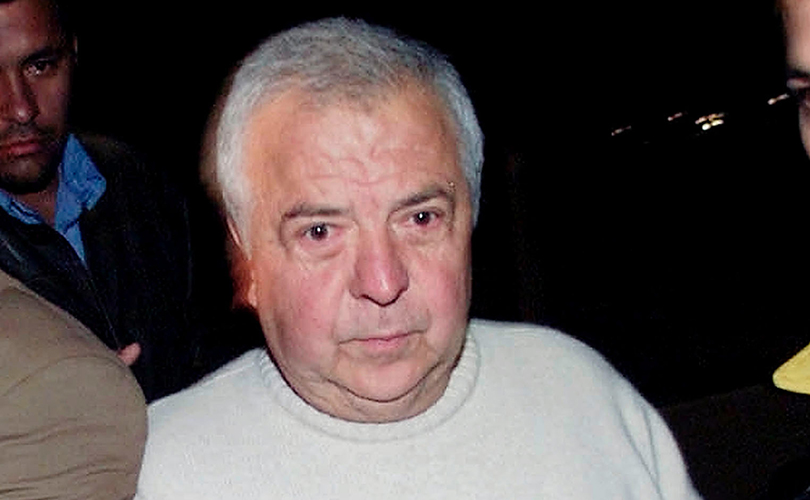
Months after Rodríguez Orejuela’s arrest, Corporación Deportiva América was placed under scrutiny by Executive Order 12798 by the US government, along with all the other companies in Colombia suspected of having links with the cartels. This is commonly known as the Clinton List, after the president who inaugurated it. As a consequence, all América’s assets (estimated to be $1m) were frozen and no company has been allowed to do business with them since.
We are stigmatised by the Clinton List. We haven’t had any official sponsor for four years and many of our best players are here on loan
Accusations of pay-offs, bribery, money laundering and corruption have tarnished the club’s image. Twelve years on, América are still on the Clinton List and still fighting for survival. “We are stigmatised by the List,” América’s spokesman Alvaro Almeida complains. “We haven’t had any official sponsor for four years and many of our best players are here on loan, so we take the best from the lower leagues.”
Considering their dire financial situation, América have managed exceptionally well with Copa Mustang wins in 1997, 2000, 2001 and the Copa Merconorte (now Copa Sudamericana) in 1999. Last year, however, they experienced their worst ever league run, narrowly avoiding relegation after spending much of the season at the bottom of the table.
We are survivors, shipwrecked, financial lepers and we have to resign ourselves to our unjust stigma
It prompted club president Carlos Puente Gonzalez to publish an open letter to the people of Cali urging a positive outlook: “We are survivors, shipwrecked, financial lepers and we have to resign ourselves to our unjust stigma,” the letter complains, before signing off, “In 2007 this provincial team will be 80 years old, we have to fight with goodwill, because where there is goodwill there is life.”
Almeida cites numerous examples of how the club is turning around. “We are about to become the most diplomatic club in Colombia. The fans will be part of the club, they can help us as much as we can help them. It is a new, positive era and we can prove we shouldn't be on the Clinton List.”
Nevertheless, going into their 258th meeting with Cali, America are loitering in 15th place out of 18. They must win. Cali, in second position, are the favourites, but having missed out on the play-offs last season for the first time in years, they have something to prove.
“I’m pleased with the team,” Cali’s new manager, the former River Plate star Omar Labruna, tells FourFourTwo. “We won’t be changing our strategy today but this is the clasico and it will be what the word means: classic. There is a deep rivalry and the players are very enthused. They will go in with their teeth bared.”
NEXT: Match day with the ultras
Match day
It’s 10am on the morning of the game and FourFourTwo is being bought beer by FRV leader Franklin in a car park several kilometres from the stadium. As the booze is knocked back, a stolen América flag is blown up with firecrackers, to the glee of the 300 FRV assembled members and the consternation of the neighbours.
A couple of hours later, Franklin summons the troops and the three-mile march to the stadium commences, fuelled by alcohol, poppers and more than a pinch of Colombia’s finest. The police escort stops traffic to let the all-singing, all-dancing entourage past. Leading the group is a van full of flags and fireworks, balloons and banners which they hope will make the barra’s entrance more spectacular than ever before.
As the parade arrives at the stadium, America’s ultras the Baron Rojo Sur are spied. A handful of the FRV chase them, throwing stones and bottles. Caught in the middle are riot police who don’t take kindly to being showered with glass and initiate a baton charge attacking whoever happens to be under their cosh. FourFourTwo narrowly avoids a whipping thanks to the swift action of one member of the FRV who manages to drag us to safety.
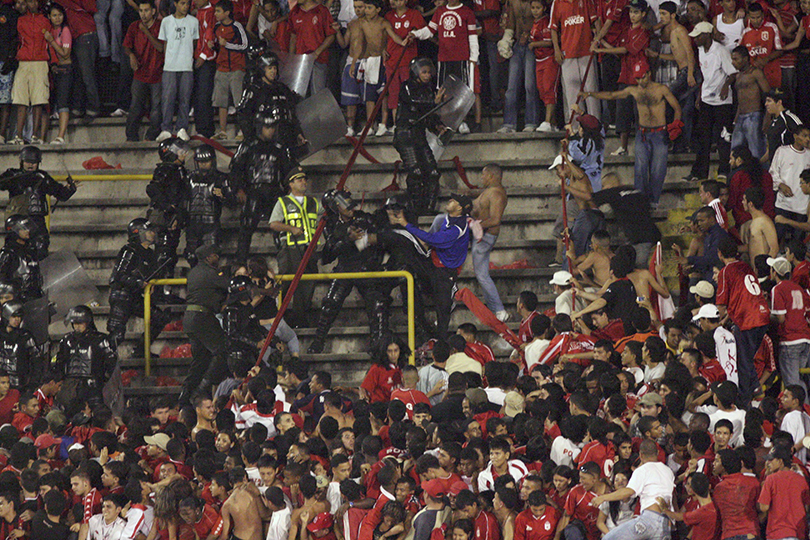
From the other side of the barriers, the Baron Rojo Sur scream obscenities and make all sorts of aggressive gestures. Leaving the protection of the FRV, we head round the other side of the stadium where the scarlet shirts of América are congregating.
You’ll see the difference between the fans inside the stadium. Cali are nothing to us. They are just kids. We are a much bigger barra.
“You’ll see the difference between the fans inside the stadium,” boasts Jhon, a tattooed member of the Baron Rojo Sur. “Cali are nothing to us. They are just kids. We are a much bigger barra.”
From pitchside in the stadium the number of red and green shirts seem equally matched, as does the terrific noise they are making. As the teams run onto the field, firecrackers are let off, increasing the decibels ten-fold. Ticker tape turns the sky momentarily white, before being cast green to the north and red to south as the barras blast smoke out of adapted fire extinguishers.
It's all kicking off
Through the still-clearing smoke, América kick off the 258th Cali derby. Cali’s players currently earn around five times as much as their rivals and they dominate from early on, but it is a typical derby game: scrappy, ill-tempered and passionate. The crowd of 35,000 “oooh” and “ahhh” every near and not-so-near miss, while the barras rattle through their chant repertoire. Only some great saves by América’s acrobatic keeper, Rolando Vargas, keeps out voracious attacks from Cali’s star forward Sergio Herrera.
At half-time FourFourTwo heads to the centre of the terrace where the FRV leaders are relaxing with a spliff. Drunk fans grab at our camera, but those who recognise us bustle us through the throng. It’s an intimidating atmosphere. Sensing our fear, Franklin places a reassuring paw on our shoulder and advises, “Stick with us and no one will touch you”.
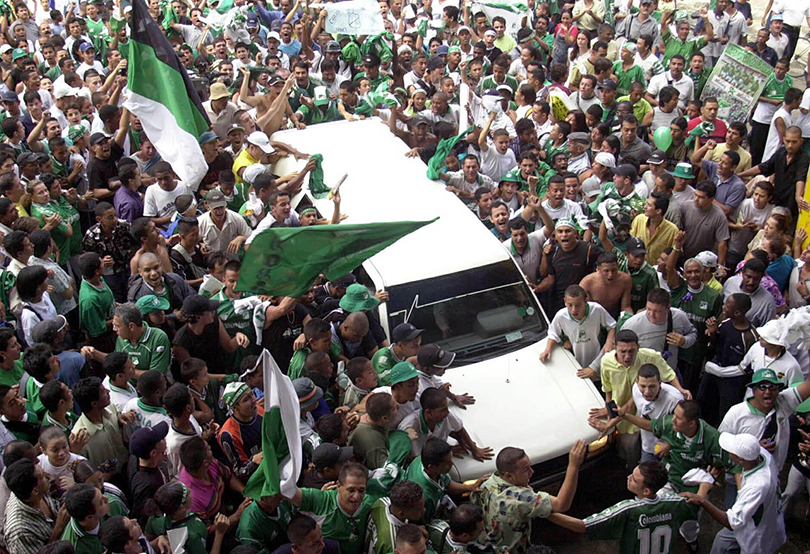
As the teams run out for the second half the drums strike up, Franklin demands a song and the 3,000 fans begin to jump. It’s like being in a mosh pit; unexplained scuffles break out constantly and a couple of times we’re knocked flying. It’s both terrifying and exhilarating. We desperately want to get out, but the adrenalin buzz keeps us wanting more.
FourFourTwo is hugged, pushed, punched and kissed as the giant flag smothering us causes claustrophobic pandemonium.
And at last, the game is as break-neck as the scenes on the terraces. Man-of-the-Match Herrera puts Cali ahead with a skilful flick round the keeper on 56 minutes. FourFourTwo is hugged, pushed, punched and kissed as the giant flag smothering us causes claustrophobic pandemonium.
The goal is too much for los Escarlatas defender Perdo Tavima, who lunges at Herrera and is sent off. Minutes later and it’s Cali midfielder Johnny Vazquez, still angry at Tavima’s foul, who is expelled after an altercation. A third red card in five minutes is shown to América’s Pablo Armero after yet another violent quarrel and the game is sealed in favour of Cali.
Only dodgy finishing prevents los Azucareros from finishing the game off. Then, in the final minute Cali’s centre-forward Armando Carrillo blasts one in off the post and, in a calculated yet bizarre gesture, runs to the red corner flag and stuffs it in his mouth. The following day the image is plastered across the local newspaper’s front page beneath the headline: ‘Top-class Cali devour suffering América’.
As the final whistle blows on a 2-0 victory for Cali, the players hurtle towards the north terrace to celebrate and 3,000 fans go berserk. For América it’s a disaster, yet through the bedlam the singing of the Baron Rojo Sur can still be heard defiant and resolute. “We are used to suffering,” explains Jhon later. “It only makes the barra stronger”.
After the game, FourFourTwo grabs a spicy kebab outside the stadium with our FRV hosts. They are thrilled with the win as the team are now well on their way to the play-offs. “We have fulfilled our role as the 12th player,” says Franklin.
Would it have mattered if Cali won or lost? “Of course we are happy when they win, but the most important thing is the passion,” he admits with a grin. “We only see the team every seven days but we are the barra every single day of the year.”
This feature originally appeared in the July 2007 issue of FourFourTwo. Subscribe!
